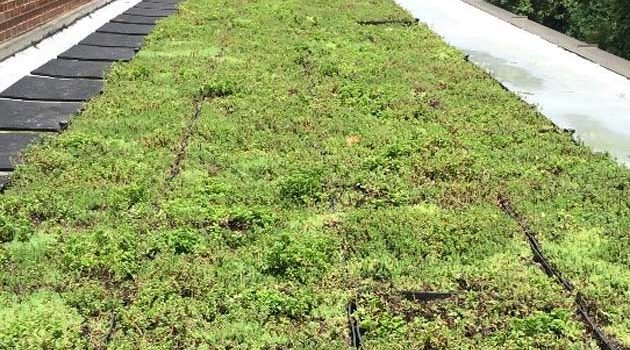This past summer, the Vanderbilt Green Fund organized the installation of a green roof on the third floor of Rand. The rooftop addition provides campus sustainability benefits such as heat insulation during the winter, building protection from UV rays and improved stormwater management. Vanderbilt News reported a full list of the green roof’s environmental perks.
Vanderbilt is already home to four other campus green roofs, some in places that students may least expect. Hidden green roofs include the Kissam Courtyard, the Medical Center Plaza and the Nursing Green Space by the Pedestrian Bridge. These foliage-filled spaces resemble traditional lawns and flower beds, but actually elevate above metro street levels, qualifying them as green roofs. The Engineering & Science Building also houses vegetation on its rooftop.
The Rand roof, however, is inaccessible to students for safety reasons. The balcony contains no precautionary safety railing and was built mainly to brighten the visual of one of campus’ most frequented buildings. The installation is visible from the outside.
The Rand Hall green roof was first proposed in 2012 by a group of civil engineering students, including Vandy alum and former NFL football player, Andrew East. At the time, a green roof was too ambitious of an initiative for the past budget. Last year, the Green Fund budget expanded to $150,000, allowing for greater project funding.
Applications to the Vanderbilt Green Fund are currently open. Students interested in pursuing a campus sustainability project can submit their proposal on AnchorLink. Chelsea Hamilton, SustainVU’s Sustainability Outreach Coordinator, said that successful projects include research on environmental impact, campus energy data, cost, payback analysis and the help of a Vanderbilt sustainability staff member. First draft proposals are due Tuesday, Nov 12. The formal application is due on Dec 3.

